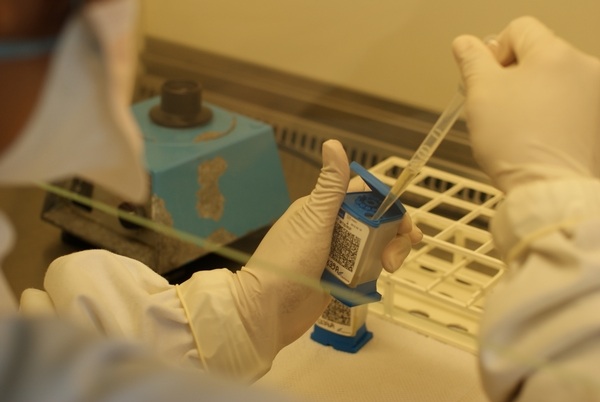I recently returned from a trip to Tajikistan representing the UK Board of Médecins Sans Frontières/Doctors Without Borders (MSF). I was privileged to meet the family of a 15-year-old tuberculosis (TB) patient who has just been confirmed as clear of the disease. The family showed us wonderful hospitality; they are delighted that she is now able to return to school. I also visited a paediatric TB hospital where a number of children aged from two to 16 are being treated.
TB is very prevalent in the world still, much more than you might think. According to the World Health Organization (WHO), it is second only to HIV/AIDS as the greatest killer worldwide due to a single infectious agent. Malnutrition, overcrowding and HIV increase the risk of contracting TB, so it is a particular problem in developing regions. Over one million people a year die from TB, 95 percent of them in lower and middle income countries. One of the United Nations’ Millennium Development Goals is to reverse the spread of TB by 2015.
Treating TB is difficult, time consuming and expensive. Multidrug-resistant-TB (MDR-TB), the hardest to treat, might take eight weeks to diagnose, 18 months to treat and cost US$6,000 (£3825) for the TB drugs alone.
The diagnosis phase is very important. There are different types of TB and, if the wrong diagnosis is made, subsequent treatment becomes harder and the risk of cross-infection increases. If a patient is accurately diagnosed and successfully treated, then he or she will make a full recovery. For children, though, there are longer term implications, as their development and education will have been affected by any prolonged periods out of school or away from the family.

TB presents engineering challenges as well as public health ones. The traditional method of testing involves growing, and looking for, TB in a sputum sample in a laboratory. There are various ways of doing this, but they all take time (increasing the risk to the patient of cross- infection or inappropriate treatment) and create a biohazard (increased the risk of infecting others). Laboratories should be negatively pressurised, with the expelled air filtered appropriately. They must have a high level of air-tightness, and this requires particular skills and attention to detail at all stages of construction, from concept design through to fit-out.
Such labs are expensive to build and maintain, and a certain level of experience, know-how and building systems technology is required. All of this is readily available in developed countries, of course, and can be imported to less developed countries if funding allows. But we must remember that building such a facility is only part of the challenge. Who will commit to maintaining it, financially and physically, for the next 50 years?
Treating TB is a moving target, as resistance to drugs tends to increase. On the diagnosis front, though, recent technological breakthroughs will significantly enhance the chances of achieving the TB Millennium Development Goal. A new machine, recommended by the WHO since November 2010, can diagnose TB (and, importantly, identify MDR-TB) in two hours. The doctor I met in Tajikistan referred to it as the ‘coffee machine’, partly because it is the same size, but also because it takes as long to get a full diagnosis as it takes the patient to get a cup of coffee. It uses a completely different technique to the traditional tests, it confirms the presence of the TB genome, and it identifies mutations in it which are consistent with MDR-TB. The machine is small, and the lab required is a basic microscopy lab. where previously three large rooms and expensive mechanical plant were needed. The virtual eradication of the diagnostic period significantly facilitates treatment, while the risk of cross-infection (MDR-TB patients infecting patients with drug-sensitive TB) is also greatly reduced. Of course it comes at a price, currently around US$17,000 for the machine and US$16 for a test cartridge. The US$16 seems low, but as testing is now so much easier, there is the potential for ‘over-testing’, in which case the cartridge costs would soon stack up.

The machine is a medical science innovation rather than an engineering one, but nonetheless it highlights the role that technologists have in public health. It is nearly 10 years since I worked for MSF in the field in Sierra Leone, and the extent of our technology there was an autoclave for sterilising, a microscope for malaria tests and a fridge for storing blood. Keeping those three pieces of kit working (with no mains power and long supply times for spares) was challenging enough. Facilitating the deployment of technology, simplifying it, and fully understanding the challenges of operation and maintenance can significantly enhance the effectiveness of healthcare in lower income countries; this is an area where engineers can make a very real difference.
You can learn more about living with TB through MSF’s ‘TB and ME’ blogs at http://blogs.msf.org/tb/


Labour pledge to tackle four key barriers in UK energy transition
I'm all for clarity and would welcome anyone who can enlighten me about what Labour's plans are for the size and scale of this Great British Energy....